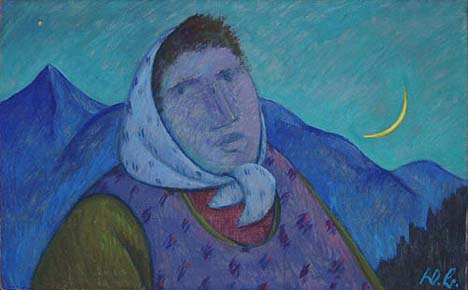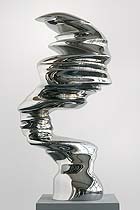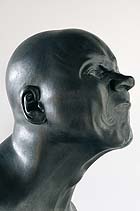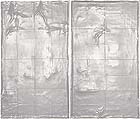
translated and summarized by: Liz Wollner-Grandville,
English summary April 28 - May 4
Werner Berg Galerie: 40 years of Werner Berg in Bleiburg
Rootage
The renowned artist museum “Werner Berg Galerie der Stadt Bleiburg” was founded in 1968 in Lower Carinthia and has developed into a respectable small museum with high standards. Werner Berg, born 1904 in Germany, moved to the Rutarhof, a mountain farm, in 1931, where he worked as a farmer and painter until 1981, the year he died.
Werner Berg had exceptionally close ties to the landscape and the inhabitants of the region. He transposes this rootage into his work with great artistic intensity. This depicted concentration of landscapes and people in Southern Carinthia was created without any of the usual pathos or strained nationhood.
Photos, films, original documents, and press clippings accompany the exhibit and offer a complete picture of the artist as well as the museum.
Werner Berg Galerie der Stadt Bleiburg / Carinthia
9150 Bleiburg, 10.-Oktober-Platz 4, until 01.06. 2008
www.berggalerie.at
Belvedere: Tony Cragg – F.X. Messerschmidt
Canon and cannot
New works only exist because there are old ones. No art without canon – you can’t come up against this fact, no matter how hard you try. In our post-modern time this mechanism has slowly become accepted. And since there is nothing you can do about it, one might as well make it clear: new pieces of art are positioned next to, in front of and above the old ones.
This can be a successful undertaking – take the Francis Bacon exhibit in the Kunsthistorische Museum, where his works were displayed together with his inspiring example Velazquez. Or it can be an experimental undertaking - like the current exhibit at the Lentos, in which five contemporary artists juxtapose their work in connection with archived inventories. Or it can be insignificant, banal, and nondescript as this is currently the case in the Belvedere. The founder of scurrility in art is presented in comparison to a software specialist. Obviously Tony Cragg ends up with the short end of the stick - not F.X. Messerschmidt . It is always the younger one who loses - and old pieces of art can easily exist without the new ones. Poor Cragg.
Messerschmidt offers everything that contemporary art would like to offer: stylisation, necessity, an individual program, and spectacularity. All that Cragg has to offer is a certain level of attention, while his program is a computer program, the gallery owner creates the necessity, and the stylisation exhausts itself in styling.
Cragg’s colourless steles have nothing to offer in comparison to Messerschmidt’s work. If you circle around his work often enough, you can get a notion of silhouettes with something of a likeness to a human head, but most of the time you see nothing but a machine formed sculpture solely offering a momentary effect. Not worth talking about - and no chance to be taken up in the canon.
Belvedere
1030 Vienna, Prinz Eugen Strasse 27, until 25. 05. 2008-05-01
www.belvedere.at
Wannieck Gallery: Barbara Höller - Systémy, Petr Kvicala - Waves
Shrinking possibilities
An overview of Barbara Höller’s work dating from the middle of the 90’s is currently being shown in the amazing rooms of the Wannieck Gallery in Brno, an old factory hall. Her exhibited oeuvre also includes works that are either new or have not been on display for many years. Such as her early orthogonal structured plywood pieces. Even her most recent series “Sack” focuses on the relationship between an image and its supporting medium: unfolded garbage bags are used as a temporary support and covered with thick layers of paint, which, after they have dried, are peeled off and are draped like a curtain over a new, stable support. This shrinking process develops innate, moving structures, which are not predictable and hardly controllable. In the end, creation is always a game between controllable factors and those that cannot be influenced.
While Barbara Höllers work is shown in the “Galerie auf der Brücke” (Gallery on the bridge), a platform next to the old crane, Petr Kvicala’s (born 1960 in Brno) comprehensive retropsective "Waves" of WPop and Op Art influenced pieces dating back to 1984, is displayed on the much larger ground floor of the factory. His work is remarkable – especially when Op Art compositions, which remind of children’s sketches, are reduced to delicate horizontal lined structures with a great distance between each other, and a basic system of order can only develop upon closer inspection.
Wannieck Gallery
60200 Brno, Ve Vankocvce 2, until 29. 06. 2008
www.wannieckgallery.com
MAK - Applied Arts / Contermporary Art: Andreas Fogarasi 2008
Tracing the grammar of space
The consequence with which Andreas Fogarasi analyzes the grammar of spacial displays once again becomes clear in his current exhibit in the MAK Gallery. His video camera-approach to the interior design of cultural centres located in Budapest attempted to define modernism in public places. The current exhibit takes a closer look at the seemingly different spatial coherences – this time with a photo camera.
Fogarasi compares the Paris Automobile Salon “Mondial de l’Automobile” (2004)with the “Pacific Design Center” in Los Angeles, designed by the Argentinean architect Cesar Pelli in 1972.
It seems a little provocative that Fogarasi, after analyzing space according to its socially coded functions in his earlier works, is now concentrating on an automobile fair, targeted at increasing sales figures. The juxtaposition of the photos created in Paris with those in West Hollywood are rather startling.
Fogarasi encourages the questioning of surfaces and pleads for their critical reading. The Pacific Design Centre blends different kinds of functionalities and thereby allocates culture to business. This development is decoded by Fogarasi’s close-ups of trivial everyday situations or by photos of signs with the inscription “to the trade”. On the other hand, his Paris photographs show how powerful temporary architecture can be, as it is sometimes only set up for a few days.
The exhibit is enhanced by an interview with the designer Peter Ghyczy conducted by Fogarasi. The interview was published in a booklet displayed on a table mounted on the wall of the show. Based on an egg-shaped designer chair created in the 70s the comings and goings of fashions in Social Realism are discussed. The booklet functions unpretentiously as a connecting link between Fogarasi’s work and the MAK collection of design- and architectural history.
On account of this link the immediate question arises, why such an exhibit was – one could say reclusively - placed in the basement of the MAK, instead of being part of a comprehensive project dealing with the interference of art, architecture and social coherences.
MAK Applied Arts / Contemporary Art
1010 Vienna, Stubenring 5, until 14.09.2008
www.mak.at
Mehr Texte von translated and summarized by: Liz Wollner-Grandville


 Teilen
Teilen







